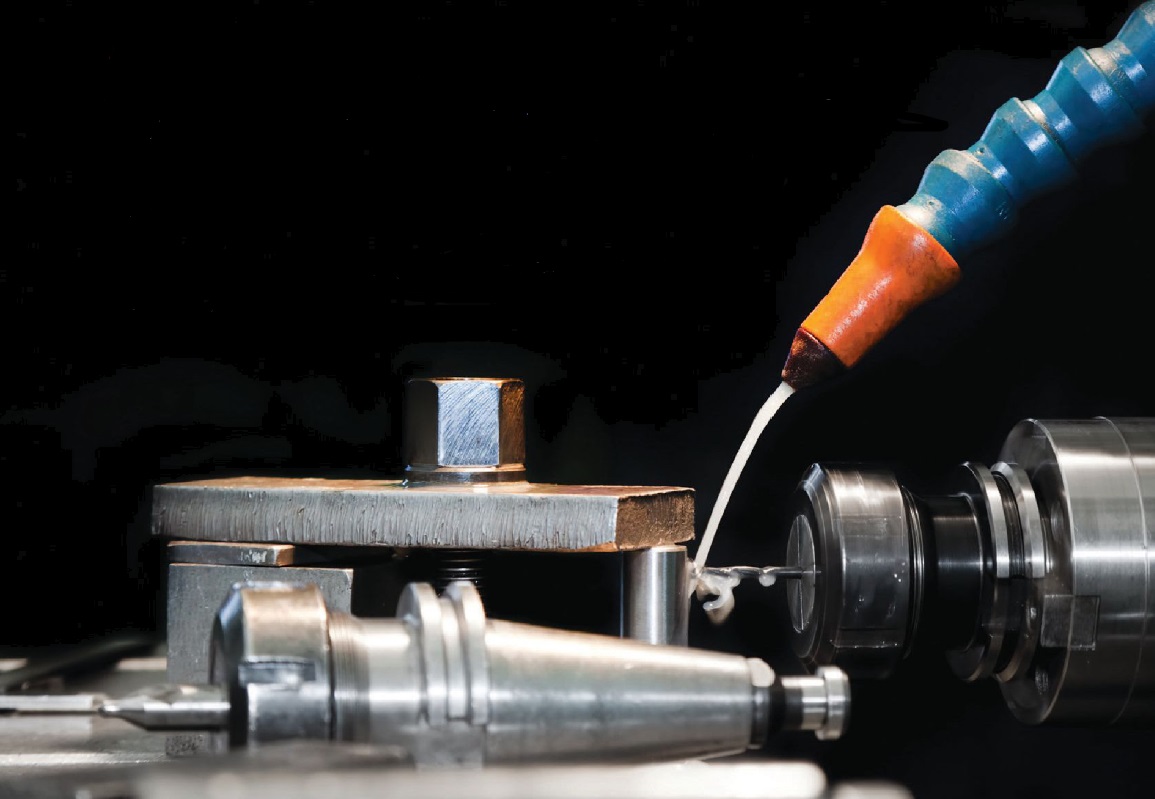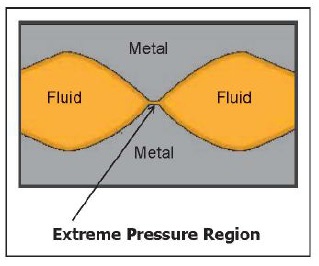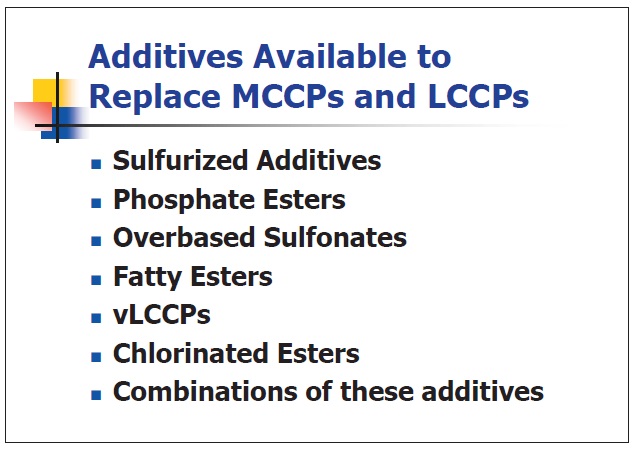Industry Report: Chlorinated paraffins under EPA scrutiny
Stuart F. Brown, Contributing Editor | TLT Webinars February 2016
Current deadline for stopping importation and production is mid-2017.

© Can Stock Photo Inc. / photocreo
KEY CONCEPTS
•
Chlorinated paraffins are the most cost-effective EP additives in the market.
•
The MWF industry is in the process of developing and evaluating alternatives to medium- and long-chain chlorinated paraffins.
•
Currently the EPA indicates that medium- and long-chain chlorinated paraffin production and importation into the U.S. must stop by the middle of 2017.
MEET THE PRESENTER
This article is based on a Webinar originally presented by STLE University on June 10, 2015. “Chlorinated Paraffins: Where Do We Go From Here?” is available at
www.stle.org: $39 to STLE members, $59 for all others.
Dr. Neil Canter received his doctorate in chemistry from University of Michigan in 1983 and his bachelor’s of science degree in chemistry from Brown University in 1978. He has been working in the metalworking fluid industry for over 25 years. Dr. Canter previously worked for Stepan Co. and Mayco. Presently he runs his own consulting company called Chemical Solutions. He specializes in commercial development, marketing, product development and regulatory support for the metalworking fluid industry.
Dr. Canter is a member of the American Chemical Society, Society of Automotive Engineers and STLE. He is a Certified Metalworking Fluids Specialist™. Dr. Canter is a contributing editor for TLT magazine, responsible for writing the monthly Tech Beat column. He is a past chair of STLE’s Metalworking Fluid Education & Training Subcommittee and a member of the STLE Education Committee. He also serves on STLE’s board of directors.
Dr. Canter has been actively involved in preparing and presenting education content for the STLE Metalworking Fluid Training Courses for more than 10 years. He also has made presentations at past STLE annual meetings and local section meetings on metalworking fluids and other topics such as biobased and synthetic lubricants. You can reach Canter at
neilcanter@comcast.net.
 Dr. Neil Canter
Dr. Neil Canter
WITH THE EPA SET TO STOP IMPORTATION and production of 99% of all chlorinated paraffins, an extreme pressure (EP) additive, in mid-2017, metalworking fluid (MWF) formulators and ingredient makers are in the process of developing and evaluating new recipes.
This article is based on an STLE University Webinar presented by Dr. Neil Canter on June 10, 2015. Canter runs his own consulting company, Chemical Solutions, is a contributing editor responsible for writing the monthly Tech Beat column in TLT and serves on STLE’s board of directors.
Chlorinated paraffins are the most cost-effective EP additives in the market. Other parts of their appeal are that they have no objectionable odor and do not cause some of the other problems, such as staining copper and promoting microbial growth, that can occur with sulfur- and phosphorus-based EP additives.
When used in MWFs, chlorinated paraffins react with metal surfaces to serve as a special type of boundary lubricity enhancer that forms a metal-salt layer between metallic surfaces at elevated temperatures. This layer acts as a barrier to reduce friction, wear and damage (
see Figure 1). These compounds range in length from C10-C30 and are divided into groups consisting of short-chain (C10-C13), medium-chain (C14-C17), long-chain (C18-C20) and very long-chain (C21-C30) chlorinated paraffins. The latter is a fourth type of chlorinated paraffin that was commercialized a few years ago and has been cleared for use by the EPA (
see Table 1).
 Figure 1. Chlorinated paraffins are used as extreme pressure (EP) additives.
Table 1. Current Chlorinated Paraffin Categories
Figure 1. Chlorinated paraffins are used as extreme pressure (EP) additives.
Table 1. Current Chlorinated Paraffin Categories

Chlorinated paraffins have been used in the industry since the 1930s. They have been under regulatory scrutiny for some time. In 1994, short-chain chlorinated paraffins were added to the EPA’s Toxic Release Inventory of banned chemicals, with Canada, the European Union, Australia and Japan following suit. During the mid-1990s, in response to these regulatory actions, the MWF industry moved to medium- and long-chain chlorinated paraffins, with medium-chain becoming the major category of use in the U.S. At the same time, European authorities began labeling medium-chain chlorinated paraffins as toxic to aquatic organisms.
Jumping to 2009, the EPA proposed that short-chain, medium-chain and long-chain chlorinated paraffins be removed from the Toxic Substance Control Act (TSCA) inventory and that the producers and importers of these materials were asked to submit pre-manufacturing notifications to place them back on the TSCA inventory. The EPA’s objective is to have the chlorinated paraffins listed on the TSCA have more accurate Chemical Abstract Service numbers and descriptions. Chemicals not on the TSCA list cannot be sold in commerce in the U.S.
In January 2015 the EPA gave two options in writing to chlorinated paraffin producers: stop selling medium-chain and long-chain chlorinated paraffins immediately or stop producing and importing them into the U.S. by the end of May 2016. In September 2015 the EPA extended the deadline from the end of May 2016 until the middle of 2017.
At this time, the EPA has not provided a significant use rule to inform the MWF industry when medium-chain and long-chain chlorinated paraffins can no longer be used.
“This is a major development that significantly impacts the MWF industry,” says Dr. Canter.
The MWF industry would like to see the retirement of the chlorinated paraffins pushed off until five years from now to allow for the time-consuming reformulation and evaluation of alternative formulations.
In a September 2015 presentation at the 5th International Conference on Metal Removal Fluids, Dr. Maria Doa from the EPA assured industry representatives that MWF producers will not be stuck with unsalable inventory and end-users will not be forced to dump systems containing chlorinated paraffins. Users of metal-cutting fluids may wonder why medium-chain and long-chain chlorinated paraffins will be banned. The EPA’s rationale is that medium-chain and long-chain chlorinated paraffins represent a risk to environmental organisms and display persistence and bioaccumulative potential. The EPA based its ruling on conservative modeling. The agency looked at a worst case scenario—that all chlorinated paraffin-based MWFs end up in the aquatic environment. The model, however, does not take into account the significant use of chlorinated paraffins in straight oils, which are not mixed with water during use and do not end up in the aquatic environment.
In December 2015 the EPA summarized its findings on medium-chain and long-chain chlorinated paraffins in the U.S. Federal Register and requested that all interested parties submit available data and/or comments about the risk assessments (
1). All feedback on these two chlorinated paraffin types is requested by February 22, 2016.
Alternative extreme pressure additives are available, but they are not direct replacements for the traditional medium-chain and long-chain chlorinated paraffins; nor do they offer one-stop shopping (
see Figure 2). Canter says, “These alternative extreme pressure additives will need to be used in combination to achieve the desired extreme pressure protection.”
 Figure 2. A list of additives to use when medium-chain and long-chain chlorinated paraffins are banned.
Figure 2. A list of additives to use when medium-chain and long-chain chlorinated paraffins are banned.
With the EPA intending to eliminate the use of medium-chain and long-chain chlorinated paraffins in the future, Canter counsels chlorinated paraffin users to get working with their suppliers on developing new EP ingredients that will fit into the rapidly changing regulatory landscape.
REFERENCE
1.
December 23, 2015, “Chlorinated Paraffins: Request for Available Information on PMN Risk Assessments,”
Federal Register,
80 (246), pp. 79886-79888.
 You can reach free-lance writer Stuart F. Brown at www.stuartfbrown.com
You can reach free-lance writer Stuart F. Brown at www.stuartfbrown.com.